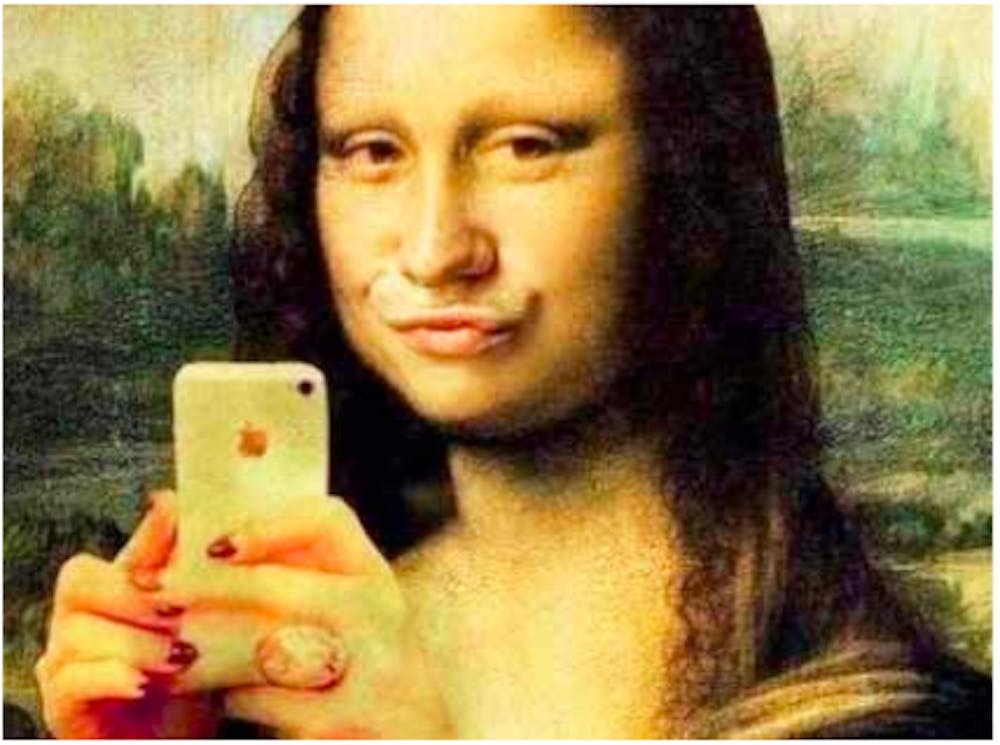My Facebook cover photo is a picture of me standing in front of a large, colorful art piece at the Metropolitan Museum of Art. I didn’t know who the artist was and I didn’t know what the piece was called. But damn, did I look artsy.
I realize that I’m part of the problem. When I saw “Spectrum V” by Ellsworth Kelly at the Met, my first thought wasn’t, “Wow, what an interesting artwork!” It was, “Wow, what an interesting mupload!”
To be fair, my Met visit this summer was the first time I ever went to a famous art museum, so I was a bit overly excited. Even though my Facebook profile still shows blatant evidence of my art ignorance, my vastly more mature, three–months–later–self can’t help but feel annoyed while I walk through the Philadelphia Museum of Art and see teenagers take selfies with Van Gogh’s “Sunflowers.”
Art doesn’t begin and end with the piece itself—part of art is the way that its viewers interact with it. Is taking selfies with art a positive reaction? Should curators care if some teens just want to make their Instagram look interesting?
Selfies stir up more controversy in the art world more than what one might expect. Sir Peter Bazalgette, Chair of the Arts Council England, thinks that when people have something digital to take away from a gallery it facilitates the spread of art. He also suggested, however, that galleries should allow one hour a day when selfies are banned—sparking mass controversy and discussion.
Not all art aficionados are anti–selfie. Cindy Sherman is essentially famous for selfies, and the Moving Art Image Fair in London curated the “National #Selfie Portrait Gallery” in 2013. This summer, leading up to the demolition of Brooklyn’s historic Domino Sugar Factory, Kara Walker promoted her exhibit—a sphinx made of 80 tons of sugar—through the hashtag “#KaraWalkerDomino.” Walker wanted to use the uploaded photos to create an interactive, 3D model of the sculpture so that the art could live on after the Domino Sugar Factory was demolished.
The selfie problem is also rooted in our desire to portray ourselves on social media in the best light possible. We want our friends to see us hanging out around a Rembrant self–portrait. We want to make it seem like we go to concerts, museums and art galleries every weekend, where we hang out with our cool, artsy friends. We want to appear more cultured than we really are.
There’s no use in resisting the force of the social media generation, but we also need to appreciate and respect the history of art. I’m still going to feel annoyed when I see people pose beside Picassos, but I’m excited to see how the next generation of artists incorporate social media into their work. Take your selfie, post that Insta, and update your cover photo—but first, just think about what your Art History professor would say.

